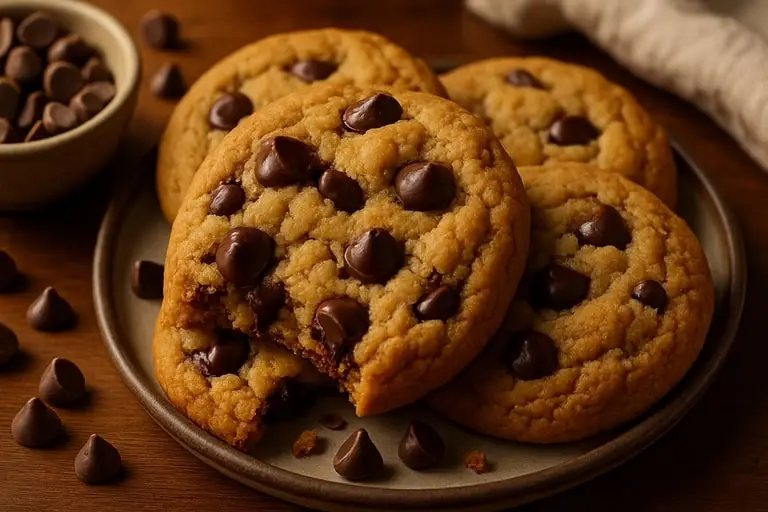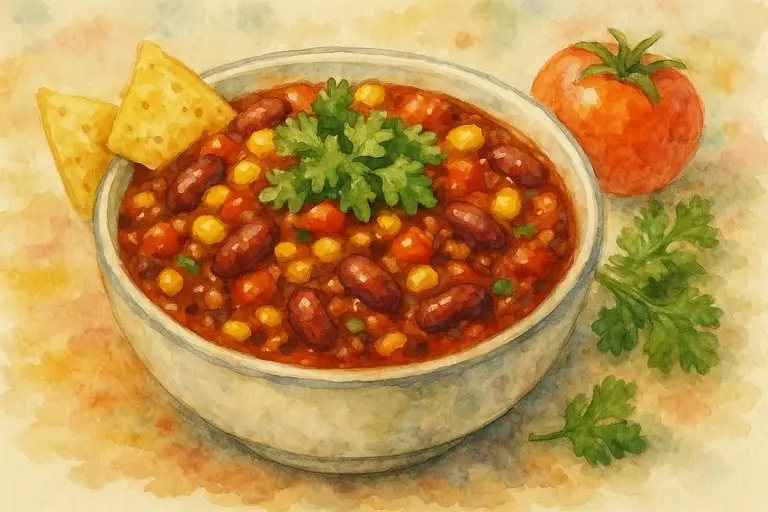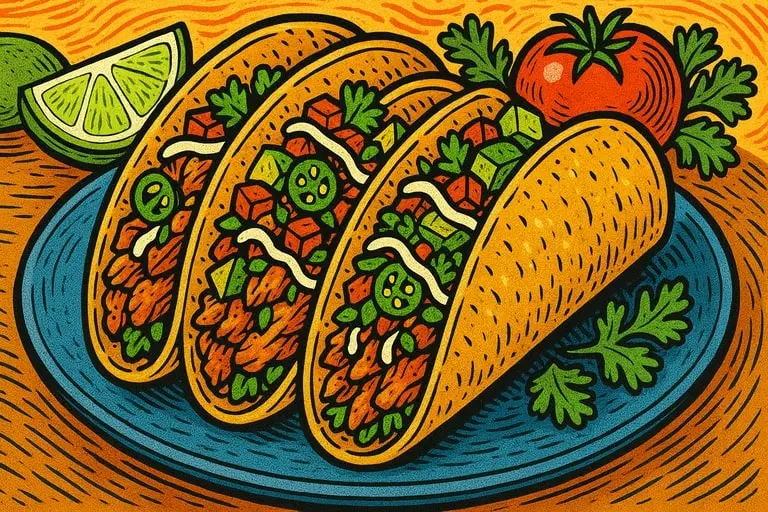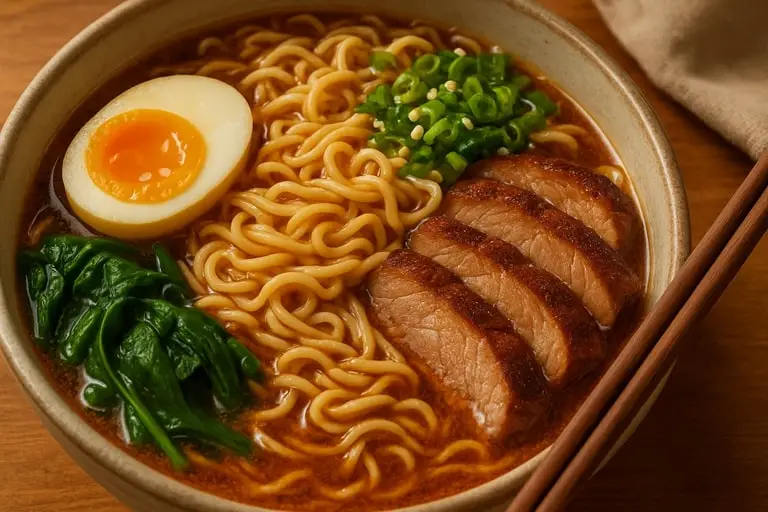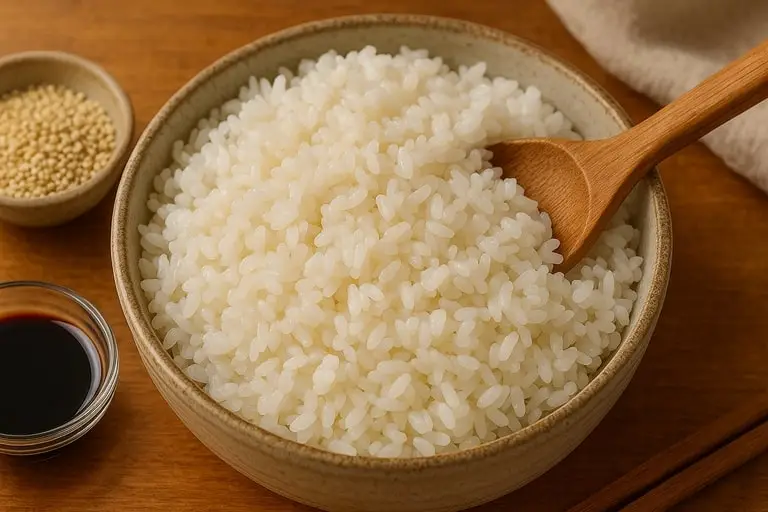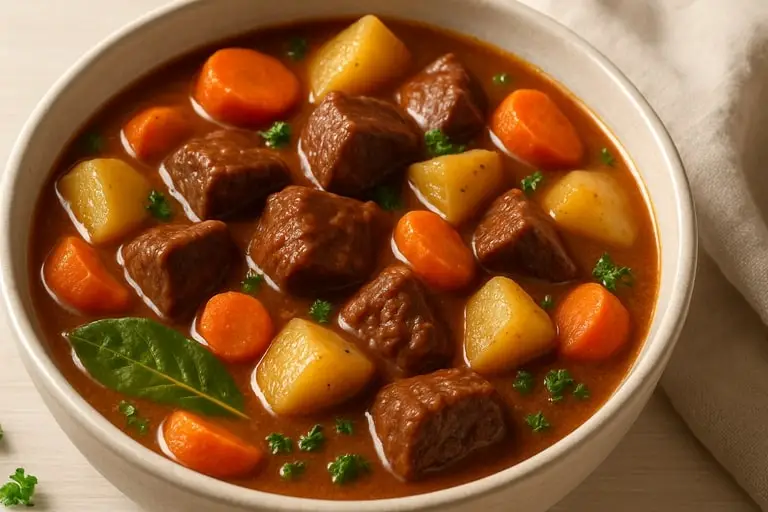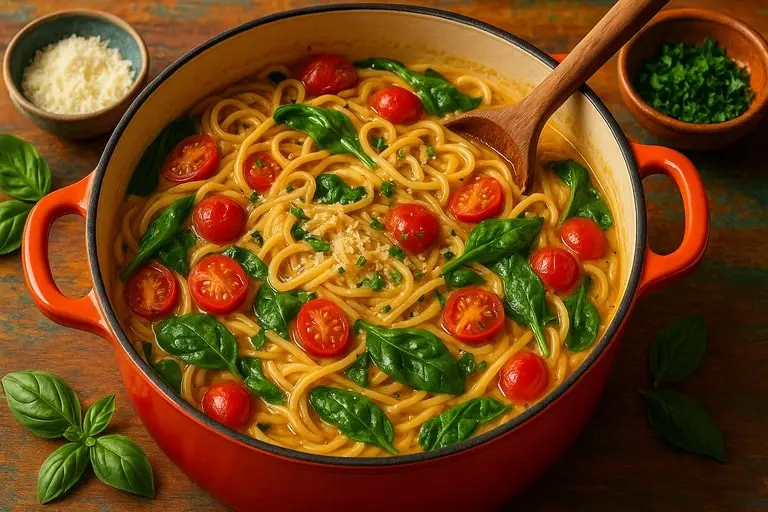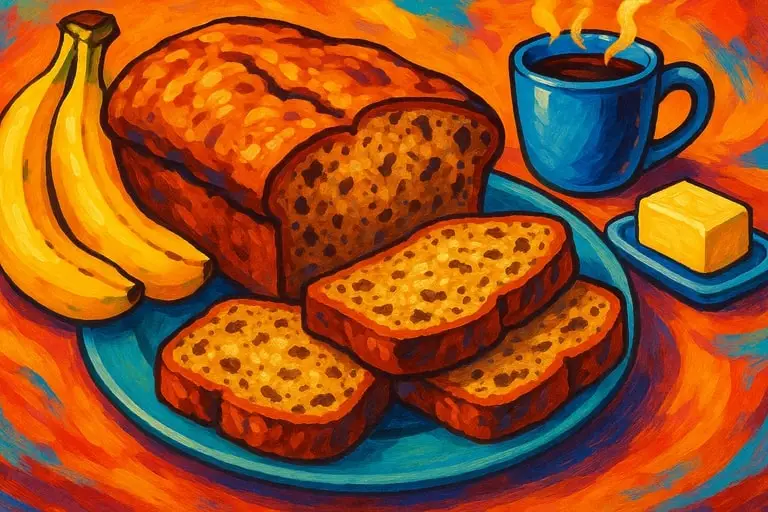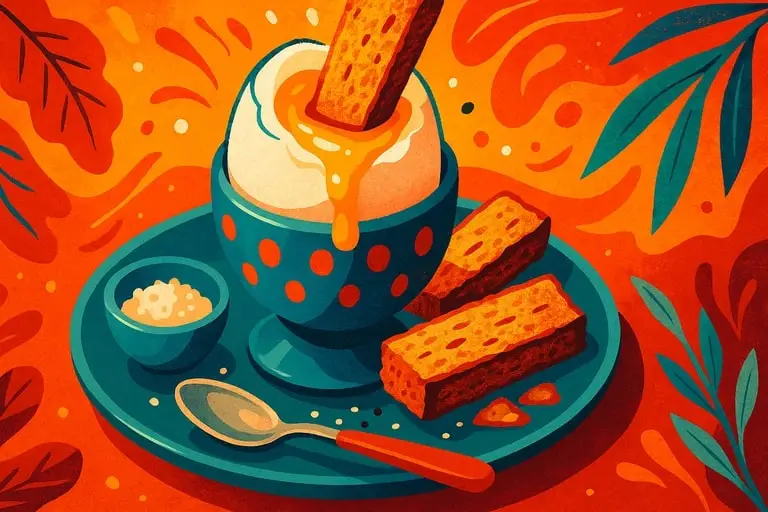The chocolate chip cookie recipe stands as one of the most enduring treasures in baking, celebrated across cultures for its perfect harmony of sweetness, richness, and texture. From its invention in the 1930s to its ubiquitous presence in homes and bakeries today, the chocolate chip cookie recipe reflects both tradition and innovation, continually adapted while remaining recognizable. Its power lies in simplicity: a handful of ingredients combined with care, transformed in the oven into treats that engage senses and memories alike. Beyond taste, the recipe carries cultural weight, symbolizing comfort, hospitality, and nostalgia.
The origins of the chocolate chip cookie recipe are attributed to Ruth Wakefield of the Toll House Inn, who accidentally discovered the combination of chocolate chunks in butter-rich cookie dough. This serendipitous creation quickly spread, and the recipe was published widely, becoming a staple of American households. What began as an experiment became an icon, shaping global dessert culture and inspiring countless variations that pay homage to the original while tailoring flavor and texture to local preferences.
Central to the appeal of the chocolate chip cookie recipe is its balance of textures. Crisp edges yield to chewy centers, while molten chocolate contrasts with tender dough. This interplay creates complexity within simplicity, ensuring that no bite feels monotonous. Achieving this balance depends on precise technique, where butter, sugar, and eggs interact with flour to create structure while maintaining tenderness. Bakers quickly discover that small adjustments in mixing or baking time can profoundly alter results, highlighting the artistry embedded in this seemingly straightforward recipe.
The chocolate itself defines the cookie’s character. Semisweet chips remain classic, offering bittersweet notes that cut through richness. Yet recipes adapt easily to milk, dark, or even white chocolate, each variation shifting sweetness and depth. Chopped chocolate bars create pockets of molten decadence, while chips maintain consistent distribution. This flexibility allows bakers to craft cookies suited to personal preference, reinforcing the universality of the recipe while inviting individuality.
Butter and sugar ratios also influence outcome. Creaming butter with white sugar produces lighter cookies with more crispness, while brown sugar adds moisture and chew due to its molasses content. Recipes often blend the two to balance texture, demonstrating how chemistry underpins culinary art. Adjustments in fat content—whether butter or alternatives like coconut oil—further shift character, making the chocolate chip cookie endlessly adaptable.
Eggs provide structure and richness, binding dough while influencing chewiness. Flour type also matters: all-purpose flour yields reliable texture, while bread flour adds structure and cake flour softens crumb. Even the leavening agent—baking soda versus baking powder—shapes spread and lift. These variables ensure that no two chocolate chip cookie recipes are identical, and each baker’s version becomes a personal signature.
Culturally, chocolate chip cookies represent care and generosity. They are baked for family gatherings, shared in classrooms, and offered as gifts. Their portability and universal appeal make them ideal for community events, from bake sales to holiday exchanges. The very act of baking them communicates affection, transforming ingredients into symbols of warmth and connection.
The sensory impact of the chocolate chip cookie recipe contributes to its legendary status. The aroma of butter, sugar, and chocolate wafting from the oven evokes comfort and anticipation, while the sight of golden-brown edges promises satisfaction. The tactile pleasure of breaking a cookie in half, revealing soft interiors and melting chocolate, completes the sensory experience. These qualities ensure that chocolate chip cookies engage memory and emotion as much as taste.
From a nutritional standpoint, the chocolate chip cookie recipe sits firmly in the realm of indulgence. Yet moderation and adaptation allow them to align with evolving dietary needs. Bakers experiment with whole wheat flour, reduced sugar, or dairy alternatives to create versions that balance pleasure with health consciousness. This adaptability ensures continued relevance across generations seeking both indulgence and balance.
Professional bakers elevate the chocolate chip cookie recipe into gourmet territory by experimenting with premium chocolates, sea salt toppings, or browned butter bases. Such innovations prove that the recipe serves as a canvas for creativity while retaining its fundamental identity. Even as variations abound, the core remains unchanged: a dough enriched with chocolate, baked into a golden symbol of comfort.
Ultimately, the chocolate chip cookie recipe embodies the essence of baking traditions: simple ingredients, transformed with care, yielding results that transcend taste to embody memory, comfort, and creativity. Its universal recognition and enduring popularity affirm its status as both classic and continually relevant.
Chocolate Chip Cookies and Recipe Mastery
Mastering chocolate chip cookies requires an understanding of how subtle variations influence results. Each recipe offers a framework, but true mastery lies in interpreting and adjusting based on desired outcome. Whether aiming for crispness, chewiness, or a balance of both, bakers rely on awareness of how ingredients and technique interact.
Butter forms the foundation of dough structure and flavor. Creamed butter traps air, producing lightness, while melted butter creates denser, chewier cookies. Browned butter adds nutty complexity, elevating the flavor profile. Mastery of butter’s role reveals how fat defines texture and taste, turning a familiar cookie into a unique creation.
Sugar ratios remain equally crucial. White sugar encourages spread and crispness, while brown sugar retains moisture and enhances chew. Adjusting proportions alters both flavor and texture, allowing recipes to lean toward caramel notes or lighter sweetness. Understanding this balance allows bakers to customize cookies to their ideal form, whether chewy, crisp, or tender.
The role of eggs extends beyond binding. Whole eggs contribute richness, while yolks add density and whites provide lift. Some recipes incorporate extra yolks for chewiness or use fewer eggs for crisper cookies. Flour selection complements these decisions: bread flour enhances structure, while cake flour creates softness. Mastery lies in tailoring these variables for desired texture.
Mixing technique plays a critical role. Overmixing develops gluten, leading to toughness, while undermixing leaves uneven distribution of ingredients. Gentle folding ensures uniformity without compromising tenderness. Refrigerating dough before baking also enhances results by solidifying fat and concentrating flavors, leading to improved texture and controlled spread.
Chocolate choice remains central to mastery. Semisweet remains standard, but blending dark and milk chocolates creates complexity, while white chocolate introduces sweetness. Chopped chocolate creates irregular pockets that surprise in each bite, while chips guarantee consistency. Some bakers elevate flavor with additions such as espresso powder or sea salt, amplifying contrast and depth.
Baking time determines final character. A few minutes longer yield crisp cookies, while shorter baking preserves softness and chew. Temperature adjustments also matter—higher heat sets edges quickly while keeping centers tender. These decisions highlight how mastery involves not just ingredients but attentiveness and intuition at every stage.
Cultural context enriches recipes. In American households, chocolate chip cookies embody comfort and hospitality, while internationally they adapt to local tastes—sweeter in some regions, more restrained in others. This adaptability explains their universal recognition: each culture integrates them without diluting their essence.
From a professional perspective, recipe mastery reflects consistency. Cafés and bakeries must produce identical results daily, relying on precise measurements and technique. At the same time, gourmet bakers innovate, using local ingredients, artisanal chocolates, or unique flavor pairings to distinguish their cookies in crowded markets. This dual role—predictable yet creative—underscores the cookie’s unique place in baking.
Nutrition-conscious adaptations expand mastery into inclusivity. Gluten-free flours, vegan substitutes, and reduced-sugar approaches prove that chocolate chip cookies remain relevant across dietary preferences. Mastery, therefore, is not rigid but adaptive, balancing tradition with evolution.
Ultimately, recipe mastery transforms chocolate chip cookies from simple indulgence into expressions of expertise and creativity. By understanding how ingredients, technique, and cultural context interact, bakers elevate this classic into a personal signature while preserving its universal appeal.
Chocolate Chip Cookie Recipe and Homemade Comfort
The chocolate chip cookie recipe resonates most deeply in the realm of homemade comfort, where its aroma, texture, and flavor symbolize care and connection. Baking cookies at home transcends the act of preparation, becoming ritual and memory woven into the rhythms of everyday life. It is in these domestic spaces that chocolate chip cookies achieve their fullest cultural meaning, embodying warmth, tradition, and emotional sustenance.
The aroma of cookies baking in the oven epitomizes comfort. Butter melting, sugar caramelizing, and chocolate softening release scents that fill a home with anticipation. This olfactory experience alone evokes feelings of security, nostalgia, and joy, making chocolate chip cookies uniquely capable of transforming atmosphere as well as appetite.
Homemade chocolate chip cookies often carry generational significance. Family recipes passed down through handwritten cards or oral tradition link present kitchens with past ones. Baking these cookies becomes an act of preservation, honoring lineage while creating new memories. Each adaptation or variation reflects both continuity and creativity, ensuring traditions remain alive.
The process itself offers therapeutic value. Mixing, scooping, and baking provide rhythm and focus, grounding bakers in moments of mindfulness. The act of watching dough transform into golden cookies mirrors the transformation of stress into comfort, illustrating how food preparation nourishes not only the body but the spirit.
Homemade cookies also embody generosity. Shared with family, neighbors, or friends, they function as edible gestures of care. In lunchboxes, at bake sales, or during holidays, chocolate chip cookies communicate affection more effectively than words, proving that comfort resides in both giving and receiving.
Their role in celebrations further underscores cultural resonance. Birthdays, holidays, or casual gatherings often include chocolate chip cookies, symbolizing joy through familiarity. Unlike elaborate desserts, they remain approachable, ensuring inclusivity and broad appeal. Their presence confirms that comfort does not require extravagance but emerges through consistency and authenticity.
Adaptability reinforces their role in homemade comfort. Families modify recipes to accommodate dietary needs or preferences, yet the core identity remains. Gluten-free, vegan, or reduced-sugar versions still evoke the same associations, demonstrating that comfort transcends strict formulas. This inclusivity ensures that chocolate chip cookies remain relevant across diverse households.
The visual appeal of cookies cooling on a rack contributes to domestic rituals. Children sneaking warm bites, parents guiding small hands, or friends gathering around fresh batches illustrate how the recipe integrates into shared experiences. These moments shape memory, ensuring that the chocolate chip cookie recipe retains significance long after crumbs are gone.
Psychologically, the cookie’s balance of sweetness, richness, and texture satisfies cravings that extend beyond hunger. Its ability to evoke nostalgia, reinforce connection, and provide solace ensures its place as a cornerstone of comfort food culture. In times of uncertainty, chocolate chip cookies serve as anchors, offering reassurance through familiarity.
Ultimately, the chocolate chip cookie recipe defines homemade comfort by embodying warmth, memory, and generosity. It demonstrates how simple ingredients, when combined with care, create results that transcend taste. Through baking and sharing, chocolate chip cookies confirm their place not only in kitchens but in the emotional landscapes of homes worldwide.
Chocolate chip cookies are perhaps the most iconic baked treat in modern culinary culture, embodying both simplicity and indulgence. Their global appeal comes from the way they balance textures and flavors: crisp edges yielding to soft centers, buttery dough contrasted with bursts of melted chocolate, sweetness harmonized by just a hint of salt.
To bake them is not only to follow a recipe but also to participate in a tradition that spans generations, households, and cultures. The act itself is almost ceremonial, carrying associations of warmth, family, and togetherness. When the aroma of cookies drifts through the air, it signals comfort and joy in a way few other foods can.
The origins of these cookies can be traced to the 1930s in the United States, when Ruth Wakefield, owner of the Toll House Inn in Massachusetts, famously added broken pieces of chocolate to her dough. What might have begun as a simple improvisation quickly became a revolution in baking, and the chocolate chip cookie spread far beyond American kitchens to become a worldwide staple.
Its appeal lies in its adaptability: while the basic combination of butter, sugar, eggs, flour, and chocolate remains constant, countless variations allow bakers to personalize it to their taste. That flexibility, combined with an almost universal love of chocolate, ensures its enduring place in kitchens across the globe.
At the core of baking these cookies is an understanding of balance. Each ingredient plays a vital role, and small adjustments can change the outcome significantly. Butter provides richness and tender texture, sugar brings sweetness and caramelization, eggs bind the dough, flour creates structure, and baking soda or powder offers lift.
Chocolate chips, the star of the recipe, punctuate the dough with intensity and richness. Achieving harmony among these elements is both science and art, requiring attentiveness from the baker. Too much sugar may overwhelm the palate, too little fat may make the texture dry, and overmixing can toughen the dough. Mastery comes from respecting the role of each component while allowing them to complement one another.
The process of mixing and handling dough shapes the character of the final cookie. Creaming butter with sugar incorporates air and creates a foundation of lightness, while the gradual addition of eggs ensures consistency. Incorporating flour gently prevents the development of excess gluten, preserving tenderness.
Even the choice of chocolate influences the result: bittersweet chips lend sophistication, while milk chocolate emphasizes sweetness. Some bakers experiment with chopped chocolate bars instead of chips, creating irregular pockets that melt into pools of flavor. This level of control transforms baking from a mechanical process into an expressive act, where the baker’s personality comes through in every detail.
Texture, one of the defining qualities of chocolate chip cookies, is shaped by technique as much as by ingredients. For chewy centers, higher moisture content and shorter baking times are key, while crisp cookies require lower moisture and longer time in the oven.
Chilling the dough before baking can deepen flavors and improve structure, while baking directly after mixing creates a lighter, airier texture. Adjusting oven temperature further influences results: a hotter oven browns edges quickly, creating contrast, while a lower heat allows for more uniform cooking. These subtleties allow bakers to refine their methods endlessly, pursuing their ideal cookie through experimentation.
The sensory experience of baking cookies extends beyond taste. The scent of dough caramelizing and chocolate melting fills a space with anticipation, creating an atmosphere of warmth and homeliness. The sound of a tray being set onto the counter, the sight of golden edges, the feel of a warm cookie in hand — each step engages multiple senses. Eating the first bite, when chocolate is still molten, is an experience as much emotional as culinary. This immersion of the senses explains why chocolate chip cookies have become comfort food par excellence, offering more than nourishment by connecting to memory and feeling.
The cultural role of these cookies has expanded far beyond the kitchen. They are symbols of childhood, often associated with after-school snacks, bake sales, or family gatherings. They appear in literature, film, and advertising as shorthand for comfort and love. Baking them is an act often passed down from parent to child, embedding recipes into family traditions. In professional contexts, bakeries and cafés elevate them with premium chocolates, sea salt finishes, or creative add-ins like caramel or nuts. Yet at every level, from humble home baking to gourmet reinterpretations, the cookie maintains its essence: a sweet, warm expression of care.
Nutritionally, chocolate chip cookies are often seen as indulgent rather than functional, yet even here they have adapted to changing times. Bakers experiment with whole-grain flours, alternative sweeteners, plant-based fats, or dairy-free chocolates, ensuring the treat can fit into various diets without losing its core appeal.
These innovations demonstrate the resilience of the recipe, which continues to reinvent itself while preserving its identity. For many, these adaptations allow them to enjoy a familiar pleasure in a way that aligns with their health goals or ethical choices.
Psychologically, the act of baking these cookies carries restorative power. Measuring, mixing, and baking create a rhythm that provides both structure and release. The result — tangible, fragrant, delicious — rewards the effort in a deeply satisfying way.
Sharing cookies multiplies this effect, as the baker receives joy from giving and others receive joy from eating. This cycle of effort, reward, and sharing makes baking an act of connection as well as creation. In times of uncertainty or stress, people often turn to the familiar comfort of baking cookies, reaffirming their role as emotional anchors.
The adaptability of chocolate chip cookies ensures their continued relevance. They can be miniature and delicate or oversized and decadent, crisp or chewy, simple or elaborately enhanced. They can serve as bases for ice cream sandwiches, crumble into pie crusts, or decorate cakes. Their versatility allows them to transcend their original form, becoming building blocks for new desserts while still thriving on their own. This adaptability has made them an enduring favorite for both home cooks and professional chefs.
Digital culture has amplified their popularity. Online recipes, video tutorials, and social media posts showcase endless variations, inspiring bakers worldwide to try their own versions. The visual appeal of golden cookies studded with chocolate makes them irresistible content, and the sharing of results creates a global community of enthusiasts. Each post not only spreads recipes but also reinforces the emotional value of the cookies, ensuring their presence in kitchens everywhere.
Ultimately, baking chocolate chip cookies is far more than following instructions. It is an act that embodies tradition, science, creativity, and emotion. The process of transforming simple ingredients into something universally cherished affirms the power of food to unite and comfort.
Whether prepared by an experienced baker perfecting details or a beginner taking first steps in the kitchen, the result carries the same warmth and satisfaction. Their enduring presence across cultures, generations, and contexts proves that chocolate chip cookies are not merely desserts but symbols of joy, generosity, and shared experience.

